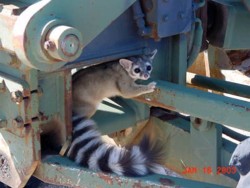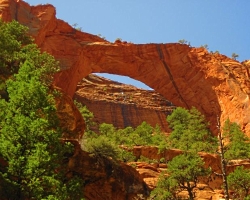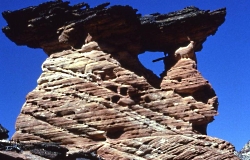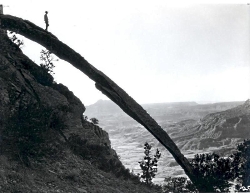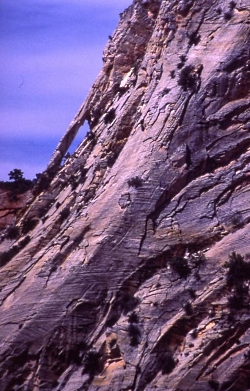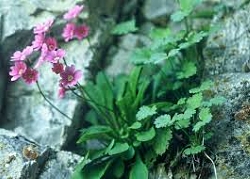
Photo Courtesy US FWS
Larry England, Photographer
Hi, I’m Ru Mahoney with Stokes Nature Center in Logan Canyon. Utah is home to several iconic species – as indelible to our state’s identity as the craggy mountain landscapes and red rock deserts we call home. Gnarled bristlecone pines stand like abstract architecture for multiple millennia. Elusive mountain lions roam our alpine meadows in the north, all the way to our red rock canyons in the south. And curious coyotes – as resourceful as our native and pioneer ancestors – are truly wily wayfarers, as adaptable to suburban environments as to open range. But however pervasive iconic species may be to perceptions about our state, there are lesser known residents that are the true Utahns – species found absolutely nowhere else in the world.
The word “endemic” refers to a plant or animal whose distribution is restricted to a specific region. Utah ranks 6th in the nation for endemic species, with 247 endemic plant species alone. One of these is Primula cusickiana maguirei, or Maguire Primrose. This unassuming reddish violet-blossomed wildflower, standing just 2-4 inches high, makes a living in the cracks and depressions of limestone and quartzite outcrops along a 10 mile corridor through Logan Canyon in northern Utah. And that’s it! You won’t find it anywhere else on the planet. Of that narrow home range, Maguire Primrose is further isolated into two distinct populations within the canyon. Subtle differences in spring temperatures between the canyon walls often lead to one population blooming before the other. And while some species of primrose can survive by occasionally self-pollinating, Maguire Primrose is entirely dependent upon pollinators like bees, moths and the occasional hummingbird for reproduction. Therefore the success of Maguire Primrose requires a precise balance between cool temperatures for development and blooming, warmer temperatures to encourage pollinator activity, and a sufficient number of compatible mates blooming at the right time in the right place. In addition to these natural challenges, the US Forest Service reports that Maguire Primrose is increasingly impacted by recreational rock climbers, who clear cracks and crevices to accommodate permanent anchors along popular routes. Stokes Nature Center, and our forest service partners in the Logan Canyon Children’s Forest, hope to increase community awareness about Maguire Primrose to recruit our fellow nature lovers, including rock climbers and other canyon visitors, to become informed stewards of this rare and vulnerable wildflower.
Wildflower enthusiasts can find Maguire Primrose blooming from mid-April to mid-May at elevations of 4,800 to 6,000 feet. Flowers are more prevalent on north-facing cliffs where moisture from spring snowmelt is abundant and cooler temperatures nurture bud development. Stokes Nature Center, in partnership with the Logan Canyon Children’s Forest, offers seasonal guided field tours where canyon visitors can learn more about natural and human threats to Maguire Primrose, and enjoy a chance to see a true Utahn species found nowhere else in the world.
For Wild About Utah and Stokes Nature Center, I’m Ru Mahoney.
Credits:
Images: Courtesy US FWS, Larry England, Photographer
Text: Ru Mahoney, Stokes Nature Center in Logan Canyon.
Additional Reading:
Natural History of Maguire Primrose, Primula cusickiana var. Maguirei (Primulaceae)
Jacob B. Davidson and Paul G. Wolf
Western North American Naturalist Nov 2011 : Vol. 71, Issue 3, pg(s) 327-337 doi: 10.3398/064.071.0301
Maguire Primrose Fact Sheet, US Fish & Wildlife Service(FWS), https://www.fws.gov/mountain-prairie/factsheets/MaguirePrimroseFactSheet.pdf
Maguire Primrose, Primula cusickiana maguirei, Utah Rare Plant Guide, Utah Native Plant Society, www.UtahRarePlants.org

